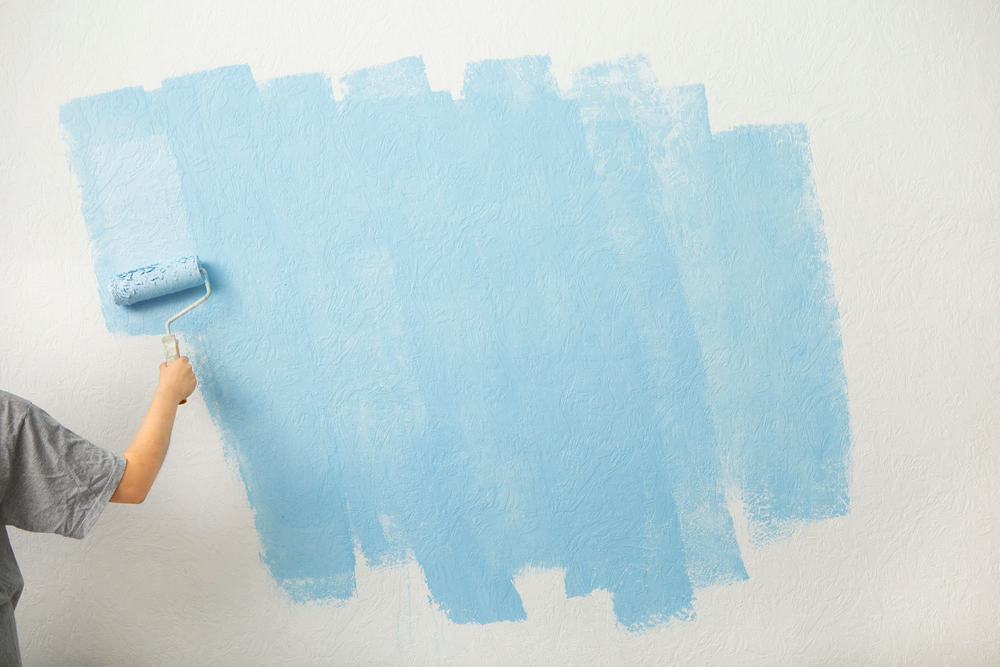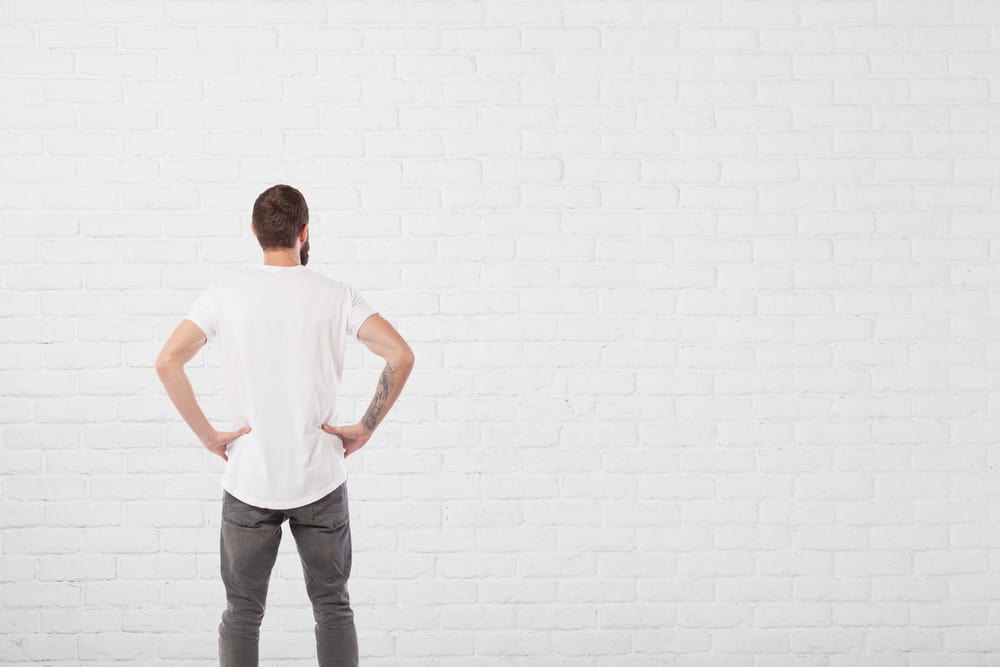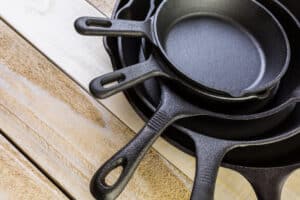
Painting is a project that many homeowners try to take on without the help of a professional.
Most times, this has to do with the fact that painting seems like an easy task to tackle.
There are, however, some things that you must make sure of when you are painting.
The most important part of a painting project is using the proper paints and products for the job.
If you have made a mistake and used interior paint outside, it’s essential to know what the impact of this will be.
Accidentally Used Interior Paint Outside (What Happens?)

Interior paint is not intended to be used outdoors because it does not have the proper chemical components to hold up in an exterior environment.
Interior paint that is used outdoors is going to fade faster, chip, and potentially fall off.
If this paint is used in an area that is not exposed to any water, and the environment stays relatively mild, you may not have any issues.
However, for most exterior applications, keeping paint from getting wet or being exposed to rough temperatures will be nearly impossible.
Let’s look at a few things which set interior and exterior paint apart.
Understanding the differences between these types of paint will allow you to choose the right types for your environment.
What Is the Difference Between Interior and Exterior Paint?

The differences between exterior and interior paints can be subtle.
However, you must take a look at the outside of the can before you apply paint.
1. Interior Paint

Paint that is used indoors is meant to work well in a temperature-controlled indoor environment.
Indoor paints are not supposed to be exposed to humidity and water.
These paints don’t have the same capability to fight off mildew, snow, and even heat.
Interior paints also have a very low odor so that they are easier for people to handle as they are using them in an indoor environment.
Since indoor paints typically are viewed a bit more closely by people, they sometimes provide better coverage as well.
Another critical thing to remember about interior paint is that it may have fewer additives.
Again, since this is used in an environment where people will be close to the paint, it is important that it is a bit easier on the lungs.
In fact, one of the problems with using exterior paint indoors is the fact that it is not as safe for people when it comes to the chemicals.
Interior paint does a great job for the inside of a home.
You can purchase it in several different finishes and thousands of colors.
However, any time it is exposed to an environment where there is a lot of water or mildew, it will mold over, crack, and potentially fall off the wall.
2. Exterior Paint

Exterior paint is designed to be able to withstand wet and moldy conditions.
You can use exterior paint indoors, although some will notice that the smell of the paint is a bit stronger.
Exterior paint has a bit more of a glue type texture to it.
It tends to be durable and creates a thick coating over things.
Exterior paint feels as though it leaves a truly thick layer of paint over the surface it covers.
Make sure you read the label on the exterior paint before applying it in an interior environment.
Sometimes the chemicals in the paint will be considered unsafe to use indoors.
One area of the house where you may still be able to use exterior paints is the garage.
Since the garage typically tends to have lots of ventilation and people will be going in and out without staying for long periods, it is usually considered safe.
The other thing to remember about a garage is that the temperature is not always controlled enough, and therefore, an exterior paint is a smarter choice.
If you don’t want to deal with the paint chipping off and getting covered with mildew, exterior paints are the way to go in the garage.
3. Hybrid Paints

Hybrid paints are a choice that will work both indoors and outdoors.
The problem with some of these hybrid paints is that they are not really ideal for either environment.
They are not truly tough enough for outdoor use, yet for indoor use, they tend to be all right.
We like the hybrid paints when you need to prime something or when you have a door that might need some help.
Another area where it can be a good option is when you are painting some outdoor furniture that is covered by an awning.
These paints won’t be as mildew resistant, but if your furniture is in a covered area, you may not have to worry quite as much about this.
What to Do If You Have Already Painted Interior Paint Outside?

If you have already used interior paint outdoors, there are a few steps that you can take to try and remedy the situation.
1. Remove Paint and Repaint

Unfortunately, one of your options is to remove the paint that you just put on and paint with the proper paint.
This is not going to be a fun project, but it is kind of inevitable.
Since the interior paint will eventually start to fall apart outdoors, it is essential that you have some kind of solution for this.
Removing freshly applied paint takes a bit of work.
You will likely need to use some kind of a paint stripper and quite a bit of manual labor to get this to work.
If you have simply painted a fence post, this project won’t take all that bag.
However, if you have painted an entire side of your house clearly, you will have your work cut out for you.
Make sure that, when you do remove all of the bad paint, you prepare the surface for the new paint to be applied.
If you don’t properly sand the surface and prime it again, you could end up still having to deal with issues from having the incorrect paint on an item.
2. Leave the Paint Alone

Another option is to leave the paint alone and let nature takes its course.
As we mentioned, interior paint that is left outside will likely crack, mildew, and eventually start to peel.
The problem with this is that there is no telling when you will start to see the paint deteriorate.
You may make it through one week, and you may make it through a few years.
It really depends on how the paint was applied, the quality of the paint, and the exposure to the elements.
Many people who make this unfortunate mistake will leave the paint and keep an eye on it.
When it starts to get into terrible condition, they will remove the rest of the paint and repaint with the proper outdoor coverage.
It is important to remember that one of the reasons we use paint outdoors is to protect things that are exposed to the weather.
If you have a piece of furniture or even your fence, chances are the paint is helping to repel water and keep the wood in excellent condition.
If you let this interior paint sit on the exterior products, you will find that it does not do a very good job of protecting the surface it is covering.
If you are worried about wood rot and potential damage to exterior fixtures, it is best to repair with the proper exterior paint products.
3. Cover with Exterior Paint

Another option some will take is to paint directly over the interior paint with exterior paint.
This is undoubtedly an option which can be considered, but there are a few things you must be sure of.
The exterior paint that you are covering with must be capable of painting over interior paint.
Some paints are not going to react well with each other, and this will prevent the new paint from sticking the way it should.
You also run the risk of the interior paint that is under the exterior starting to break down after a while.
If the base layers of paint start to mildew or break down, the top layers are also going to chip.
Applying a coat of exterior paint over the interior paint is more of a band aid than a true fix.
You will have to spend some time deciding which of these remedies is going to be the best for your particular situation.
One thing we can say is that it is likely that you will never make this same mistake again!
How Can I Tell If Paint Is Interior or Exterior?

As you can tell from the steps involved in remedying this situation, it is essential to check the paint can before you use it.
Sometimes paint cans can lose their label or get paint that covers their label.
Make sure you take a permanent felt-tip marker and write on the top of the can exactly what is in the can.
When you purchase paint, it will be clearly labeled as exterior or interior.
Looking at paint without a label, you will have a tough time telling what the paint is and where you should use it.
In fact, if you find an old can of paint, you may not want to use it at all.
You will be taking a chance of the paint not being the right match for the area where you are using it.
You are going to be better off purchasing new paint than creating double the work for yourself.
Is Exterior Paint More Expensive Than Interior Paint?

Interior paint is typically less expensive than exterior paint.
Exterior paint is usually a thicker formula and has quite a few additives to help it stay in great shape outdoors.
This is what makes the pricing of the exterior paint quite a bit higher than the interior.
Even though the exterior paint is more expensive, it is very good at protecting certain surfaces.
You will not have to change up exterior paint quite as often, and you will likely find that it fades less and stays looking good quite a bit longer.
Exterior paint will be worth the extra money.
Conclusion
Using interior paint outside is a mistake that you will likely only make once.
This will be an issue that needs to be corrected, and it will cause you to double the amount of work.
A good rule of thumb is to check every paint can before you use it.
Painting outdoors with interior paint is an unfortunate mistake, but it is not as dangerous as using exterior paint indoors.
The bottom line is painting is a process which many homeowners can take on themselves.
Just be very careful about the products you are using.



Leave a Reply